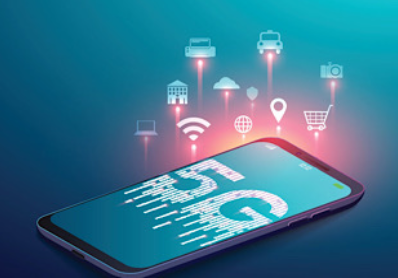Contact us
ADD:Buliding CN,Industrial Zone of Jinghui,Longmu City,Pingyang Province, Vietnam
Email:sales@seener-tech.com
WEB:www.seener-tech.com
Email:sales@seener-tech.com
WEB:www.seener-tech.com
5G, cloud computing, IOT and edge computing are complementary
On October 31, 2019, the Ministry of Industry and Information Technology (miit) and three major operators officially announced the launch of 5G business, marking China's official entry into the era of 5G commercial use. What does 5G have to do with cloud computing? What are the possible new business innovation models in the 5G era? Where is the Internet of things and edge computing in the era of 5G and cloud computing? This paper attempts to comb through these problems.
Innovation of 5G core network is realized through cloud computing

5G technology improves the bandwidth and speed of data transmission and improves the scale of device access, which means greater system capacity and a staggering increase in data traffic that requires a larger core network to accommodate.
In the 4G era, core networks typically use dedicated hardware. Entering the era of 5G, just as enterprise network has experienced the transformation from dedicated server to X86 server virtualization and cloud computing, the core network of data communication has also entered the era of virtualization, replacing dedicated hardware with general equipment such as X86 server. This technology has a specialized name, vEPC.
Further, direct use of cloud computing to build the core network, more convenient, faster, low-cost. Because the world already has a sizable cloud infrastructure that can be used on demand and scaled up and down.
In the United States, a company called Afirmed Networks won a product innovation award for its solution to build core Networks on AWS. Transatel, a French mobile virtual network provider/integrator, is a leader in Internet of things (iot) connectivity technology, providing commercial iot connectivity technology in the United States, Western Europe and Japan, covering the consumer electronics iot, connected automobile and industrial iot. The company was acquired by NTT communications group this year. Bertrand Salomon, Deputy CEO of Transatel, commented on Afirmed Networks' vEPC program: "it will rewrite the industry rules by utilizing Affirmed Networks' industry-leading, AWS based, internet-scale mobile core network solution."
The reason for rewriting the industry rules is that there are such schemes. Without the large-scale infrastructure investment of traditional operators, the core network at the operator level can be organized and scaled according to the size of users.
Build edge networks with 5G and cloud computing

Another company called Athonet. It builds edge networks based on 5G and cloud computing, another disruptive innovation. Athonet provides users with locally deployed Athonet edge nodes. Users can use Athonet edge node to build their own edge network based on 5G network.
The Athonet edge node is connected to the AWS cloud and managed through the AWS cloud. Athonet edge nodes power the local LTE base station cluster and allow all traffic in the edge network to be routed locally and within the firewall, which reduces latency, reduces network jitter (the network is not fast or slow), increases security, and is more economical, supporting harsh edge computing scenarios. By connecting to the AWS cloud, edge networks enable more complex functions, such as authentication, mobility, roaming, and so on.
The disruptive aspect of both technologies is that companies can organise their networks without regard to access or where operators do not have coverage. If there are access problems, licensed operators can also provide such services for enterprises.
Athonet has launched a SaaS service called BubbleCloud in the AWS Marketplace that customers can pay for on a per-use basis.
Internet of things services through 5G and cloud services
A large number of devices can be connected through 5G, so 5G network has become an important connection technology for the Internet of things. Cloud service providers represented by AWS have launched a series of cloud services applicable to Internet of things devices. For example, AWS IoT Core, AWS IoT Device Management, AWS IoT Events, AWS IoT Device Defender, AWS IoT Greengrass, AWS IoT Analytics, AWS IoT Greengrass ML Inference at Edge and other cloud services. It provides the functions of Internet of things equipment networking, equipment management, equipment control, security protection, data collection, data analysis, machine learning and reasoning. Deploying these iot services on the device side can not only save bandwidth resources and improve the user experience, but also arrange computing power to the edge of the network, creating a new space for third-party application integration.
The cloud and edges outside the 5G network work together in a variety of ways
No network is a panacea, and 5G is no exception. In some cases where the data is very large or the network cannot cover it, 5G May not be able to do so, and specialized edge computing may need to be considered. Edge computing is similar to the Internet of things in that it may not be real-time in terms of network connection. Some computing processing needs to be done on the end side first, and then the processing results should be synchronized to the cloud. The difference is that when it comes to edge computing, it is often more powerful than iot devices. But broadly speaking, the computing that iot devices do may also be called edge computing.
According to AWS, there are currently three main cloud services that support edge computing. The first is AWS's data migration device, Amazon Snowball Edge. It is a portable device, configured with tens of terabytes of storage capacity and strong computing power, supporting storage and computing and other aspects of cloud services. It allows you to efficiently migrate large amounts of data to the cloud. For example, for ships, windmills, remote factories and other environments without network connection, tens of terabytes of data can be efficiently transmitted to Amazon Snowball Edge, and then Amazon Snowball Edge equipment can be transported to AWS cloud data center area to transmit data to the cloud. AWS runs. It is similar to Amazon Snowball Edge except that AWS gets more cloud support, which runs the vast majority of AWS. AWS can be run in a national data center or hosted computer room, or in an area that has no Internet access, such as a mine or remote facility. AWS runs an application, processes data, and syncs AWS results with the cloud at an appropriate frequency. Third, AWS's unique satellite Ground Station service, Amazon Ground Station. It can receive data from specific customers via satellite network at the location of AWS cloud data center, which is the edge of AWS global backbone network, and transfer it to AWS cloud data center nearby for processing.
Analyze a lot of data in 5G era through cloud computing
The 5G era will produce a lot of data. According to the McKinsey report, communication service providers will generate as much as 44 ZB of data for 5G and iot applications by 2020. These data can only be processed timely and effectively through big data storage and analysis based on cloud computing and data analysis means of deep learning of artificial intelligence.
McKinsey also points out that using ai-based electronic customer service will save telecom operators 30 per cent of their costs. Ai and machine learning will help telecom companies analyze data, determine better operational strategies, optimize and automate business processes, and create better customer experiences for products and services. Cloud services represented by AWS have developed a large number of cloud services in big data analysis and machine learning, greatly reducing the technical threshold of big data analysis and machine learning and improving work efficiency.
Above, the relationship between 5G, cloud computing, Internet of things and edge computing is analyzed. Understanding these relationships is conducive to further thinking and exploring innovative applications in the 5G era. In general, 5G technology will integrate the capabilities of intelligent induction, data analysis and deep learning through the Internet of everything based on cloud computing and edge computing, and fully realize the mobile intelligent iot in the cloud era. By applying these new technologies to smart transportation, smart home, smart production, industrial management, Internet of things, smart agriculture, smart medical care, smart logistics, smart social services and other fields, we can build an efficient public service and social operation system to improve all aspects of people's lives.
